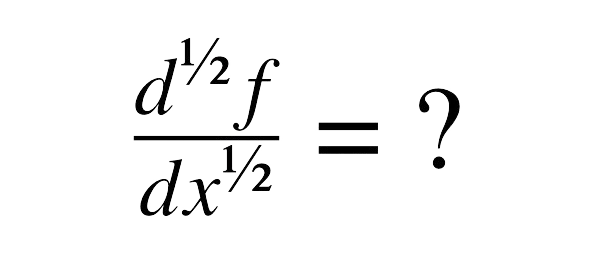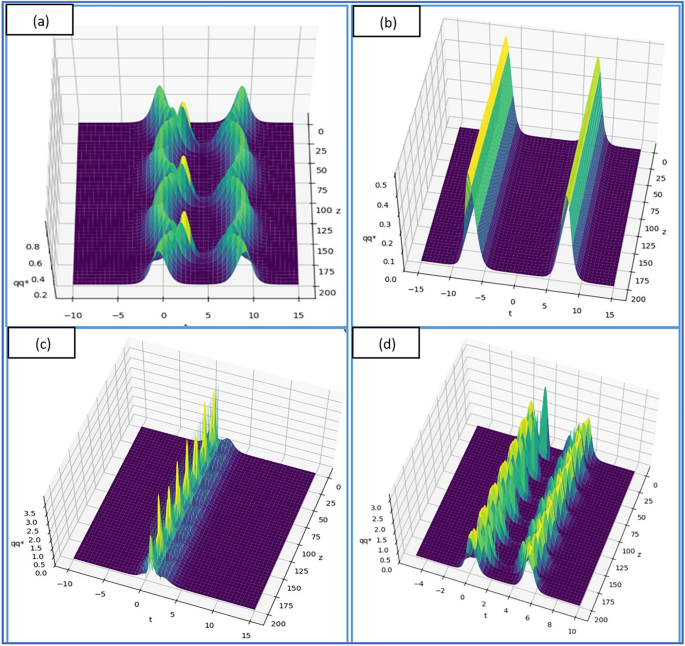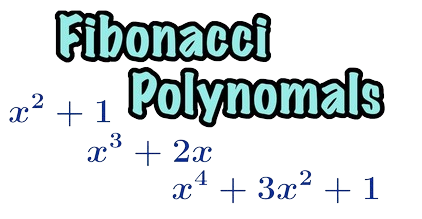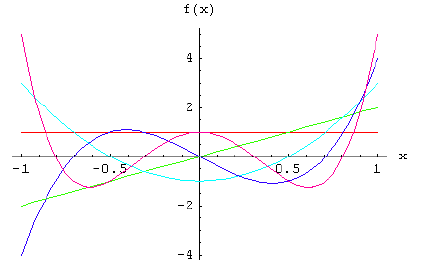Bell Polynomials Method ,we develop a new algorithm for solving linear and nonlinear integral equations using Galerkin weighted residual numerical method with Bell polynomials [1]. Bell polynomials is given as
![]() (3.259)
(3.259)
![]()
![]()
![]()
![]()
![]()
.
.
..
3.9.1 Methodology
Definition 3.9. Consider the integral equation of the 1st kind is given as
![]() (3.260)
(3.260)
where u(t) is the unknown function, to be determined,k(x,t) , the kernel, is a continuous or discontinuous and square integrable function,f(x) being the known function.
Now we use the technique of Galerkin method, [Lewis, 2], to find an approximate solution ![]() of Eq. (3.260). For this, we assume that
of Eq. (3.260). For this, we assume that
![]() (3.261)
(3.261)
where ![]() are Bell polynomials of degree
are Bell polynomials of degree ![]() defined in equation (3.259) and latex]a_k[/latex] are unknown parameters, to be determined. Substituting (3.261) into (3.260), we get
defined in equation (3.259) and latex]a_k[/latex] are unknown parameters, to be determined. Substituting (3.261) into (3.260), we get
![]() (3.262)
(3.262)
Then the Galerkin equations are obtained by multiplying both sides of (3.262) by ![]() and then integrating with respect to x from a to b , we have
and then integrating with respect to x from a to b , we have
![]() (3.263)
(3.263)
Since in each equation, there are two integrals. The inner integrand of the left sides is a function of x, and t, and is integrated with respect to t from a to x . As a result the outer integrand becomes a function of x only and integration with respect to x from a to b yields a constant. Thus for each j=0,1,2,…,n we have a linear equation with n+1 unknowns ![]() ,k=0,1,2,…,n.
,k=0,1,2,…,n.
Finally (3.263) represents the system of n+1 linear equations in n+1 unknowns, are given by
![]() (3.264)
(3.264)
where
![]()
Now the unknown parameters ![]() are determined by solving the system of equations (3.264) and substituting these values of parameters in (3.260), we get the approximate solution
are determined by solving the system of equations (3.264) and substituting these values of parameters in (3.260), we get the approximate solution ![]() of the integral equation (3.260).
of the integral equation (3.260).
Definition 3.10. Consider the integral equation of the 2nd kind is
![]() (3.265)
(3.265)
where u(t) is the unknown function, to be determined,k(x,t) , the kernel, is a continuous or discontinuous and square integrable function, f(x) and u(x) being the known function and λ is a constant. Proceeding as before
![]() (3.266)
(3.266)
where
![]()
and
![]()
Now the unknown parameters ![]() are determined by solving the system of equations (3.266) and substituting these values of parameters in (3.261), we get the approximate solution
are determined by solving the system of equations (3.266) and substituting these values of parameters in (3.261), we get the approximate solution ![]() of the integral equation (3.265).
of the integral equation (3.265).
3.9.2 Applications of Bell Polynomials Method
Example 3.40 Consider the Volterra Integral equation [2]
![]() (3.267)
(3.267)
The exact solution of Eq. (3.267) is
![]() (3.268)
(3.268)
According to the proposed technique, consider the trail solution
![]() (3.269)
(3.269)
Consider 5th order Bell’s polynomials, i.e. for n=5 we have Eq. (3.269) is
![]()
or
![]() (3.270)
(3.270)
Substituting Eq. (3.270) into Eq. (3.267)
![Rendered by QuickLaTeX.com a_0+a_1(x)+a_2(x^2+x)++a_3(x^3+3x^2+x)+a_4(x^4+6x^3+7x^2+x)+〖a〗_5(x^5+10x^4+25x^3+15x^2+x)=1-\int _0^x〖(x-t)〗[a_0+a_1(x)+〖a〗_2(x^2+x)+a_3(x^3+3x^2+x)+a_4(x^4+6x^3+7x^2+x)+a_5(x^5+10x^4+25x^3+15x^2+x)]dt.](https://mathematicsglobe.com/wp-content/ql-cache/quicklatex.com-98c6238053321dc598ac28d90bcbae88_l3.png) (3.271)
(3.271)
Now multiply Eq. (3.271) by ![]() , j=0,1…,5 and integrating both sides from 0 to 1, we have
, j=0,1…,5 and integrating both sides from 0 to 1, we have
![Rendered by QuickLaTeX.com \int _0^1〖[a_0+a_1(x)+a_2(x^2+x)++a_3(x^3+3x^2+x)+a_4(x^4+6x^3+7x^2+x)+a_5(x^5+10x^4+25x^3+15x^2+x)]B_j〗(x)dx=\int _0^1〖B_j(x)〗dx-\int _0^1〖[\int _0^x(x-t)[a_0+a_1(t)+a_2(t^2+t)++a_3(t^3+3t^2+t)+a_4(t^4+6t^3+7t^2+t)+a_5(t^5+10t^4+25t^3+15t^2+t)]dt]B_j(x)dx,〗j=0,1,\dots 5.](https://mathematicsglobe.com/wp-content/ql-cache/quicklatex.com-51b1f143ce7c25bccdcb38e9f714ff1b_l3.png) (3.272)
(3.272)
The matrix form of Eq. (3.272) is
![Rendered by QuickLaTeX.com \left[\begin{matrix}1.166666667&\dots &14.46726191\\ \vdots &\vdots &\vdots \\ 18.40178572&\dots &427.4156363\end{matrix}\right]\left[\begin{matrix}a_0\\ a_1\\ \vdots \\ a_5\end{matrix}\right]=\left[\begin{matrix}1.000000000\\ 0.500000000\\ \vdots \\ 13.91666667\end{matrix}\right]](https://mathematicsglobe.com/wp-content/ql-cache/quicklatex.com-f8b2328730401d755976f24190d45095_l3.png)
After solving we get,
![]() =0.9999572449 ,
=0.9999572449 , ![]() = 0.5993116899 ,
= 0.5993116899 , ![]() = 0.006727811425.
= 0.006727811425.
Consequently we have the approximate solution is
![]()
Table 3.37 Comparison of the Exact Solution and Approximate Solutions of Eq. (3.267) for n=5 obtained using Bell Polynomials Method
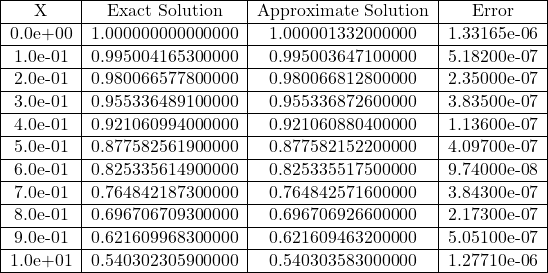

Fig 3.37 Comparison of Exact and Approximate Solutions of Eq. (3.267) for n=5.
Now consider 25th order Bell Polynomials, i.e. for we have Eq. (3.269) is
![]()
or
![]() (3.273)
(3.273)
Substituting Eq. (3.273) into Eq. (3.267)
![]() (3.274)
(3.274)
Now multiply Eq. (3.274) by ![]() , j=0,1,2,…,25 and integrating both sides from 0 to 1, we have
, j=0,1,2,…,25 and integrating both sides from 0 to 1, we have
![Rendered by QuickLaTeX.com \int _0^1〖[a_0+a_1(x)+a_2(x^2+x)+⋯+a_{25}(x+141197991025x^2+⋯300x^{23}+〖x〗^{24})]〗B_j(x)dx=\int _0^1〖B_j(x)〗dx-\int _0^1〖[\int _0^x(x-t)[a_0+a_1(t)+a_2(t^2+t)+⋯+〖a〗_{25}(t+141197991025t^2+⋯300t^{23}+t^{24}))]dt]B_j(x)dx,](https://mathematicsglobe.com/wp-content/ql-cache/quicklatex.com-715d49cd10b5e5739fc5444bb3a07280_l3.png) j=0,1,2,…,25 (3.275)
j=0,1,2,…,25 (3.275)
The matrix form of Eq. (3.275) is
![Rendered by QuickLaTeX.com \left[\begin{matrix}1.166666667&\dots &4.452081399〖10〗^{17}\\ \vdots &\ \vdots &\ \ \ \ \ \ \ \ \ \ \ \vdots \\ 6.271098472〖10〗^{17}&\dots &1.074254826〖10〗^{36}\end{matrix}\right]\left[\begin{matrix}a_0\\ a_1\\ \ \vdots \\ a_{25}\end{matrix}\right]=\left[\begin{matrix}1.00000000000\\ 0.50000000000\\ \ \ \ \ \ \ \ \ \vdots \\ 4.419861486〖10〗^{17}\end{matrix}\right]](https://mathematicsglobe.com/wp-content/ql-cache/quicklatex.com-b278584c8852b9b9b50682b29509d45d_l3.png)
After solving we get,
![]()
Consequently we have the approximate solution is
![]()
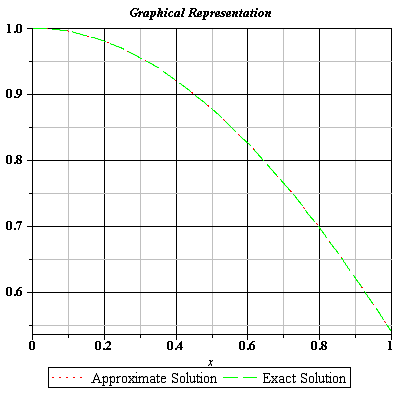
Fig 3.38 Comparison of Exact and Approximate Solutions of Eq. (3.267) for n=25.
Table 3.38 Comparison of the Exact Solution and Approximate Solutions of Eq. (3.267) for obtained using Bell Polynomials Method
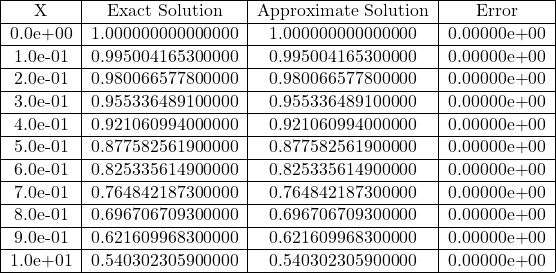
Now consider 50th order Bell Polynomials, i.e. for n=50, we have Eq. (3.269) is
![]()
or
![]() (3.276)
(3.276)
Substituting Eq. (3.276) into Eq. (3.267)
![]() (3.277)
(3.277)
Now multiply Eq. (3.277) by ![]() ,j=0,1,2,…,50 and integrating both sides from 0 to 1, we have
,j=0,1,2,…,50 and integrating both sides from 0 to 1, we have
![Rendered by QuickLaTeX.com \int _0^1〖[a_0+a_1(1+x)+a_2(1+x^2+2x)+⋯+a_{50}(x+⋯+710500x^{47}+1225x^{48}+〖x〗^{49})]A_j(x)dx\int _0^1A_j(x)〗dx-\int _0^1〖[\int _0^x(x-t)[a_0+a_1(t)+〖a〗_2(t^2+t)+⋯+a_{50}(t+⋯+710500t^{47}+1225t^{48}+〖t〗^{49}))]dt]A_j(x)dx,〗j=0,1,\dots ,50.](https://mathematicsglobe.com/wp-content/ql-cache/quicklatex.com-2c5e6412b619ab206a5969a254af489c_l3.png) (3.278)
(3.278)
The matrix form of Eq. (3.278) is
![Rendered by QuickLaTeX.com \left[\begin{matrix}1.16666666667&\dots &1.072211729〖10〗^{46}\\ \ \ \ \ \ \ \ \ \ \ \vdots &\ \vdots &\ \ \ \ \ \ \ \ \ \ \vdots \\ 1.547960211〖10〗^{46}&\dots &1.019358344〖10〗^{93}\end{matrix}\right]\left[\begin{matrix}a_0\\ a_1\\ \ \vdots \\ a_{50}\end{matrix}\right]=\left[\begin{matrix}1.000000000000\\ 0.500000000000\\ \ \ \ \ \ \ \ \ \ \ \ \vdots \\ 1.069115893〖10〗^{46}\end{matrix}\right]](https://mathematicsglobe.com/wp-content/ql-cache/quicklatex.com-580c9467e23086fcca5b57cac293e7ae_l3.png)
After solving we get,
![]()
Consequently we have the approximate solution is
![]()
Table 3.39 Comparison of the Exact Solution and Approximate Solutions of Eq. (3.267) for obtained using Bell
Polynomials Method
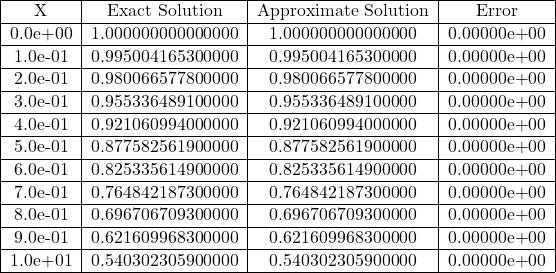

Fig 3.39 Comparison of Exact and Approximate Solutions of Eq. (3.267) for n=50.
Example 3.41 Consider the weakly singular Volterra Integral equation [2]
![]() (3.279)
(3.279)
The exact solution of Eq. (3.279) is
![]() (3.280)
(3.280)
According to the proposed technique, consider the trail solution
![]() (3.281)
(3.281)
Consider 1st order Bell Polynomials, i.e. for n=1 we have Eq. (3.281) is
![]()
![]() (3.282)
(3.282)
Substituting Eq. (3.282) into Eq. (3.279)
![]() (3.283)
(3.283)
Now multiply Eq. (3.283) by ![]() ,j=0,1 and integrating both sides from 0 to 1, we have
,j=0,1 and integrating both sides from 0 to 1, we have
![]() (3.284)
(3.284)
The matrix form of Eq. (3.284) is
![]()
After solving we get,
![]()
Consequently we have the approximate solution is
![]()
Table 3.40 Comparison of the Exact Solution and Approximate Solutions of Eq. (3.279) for obtained using Bell Polynomials Method
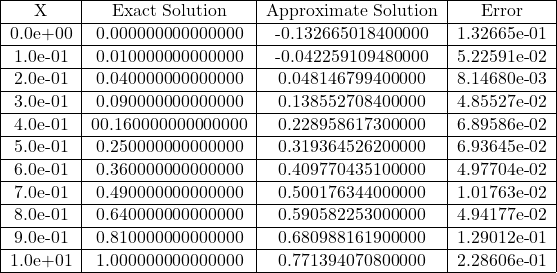
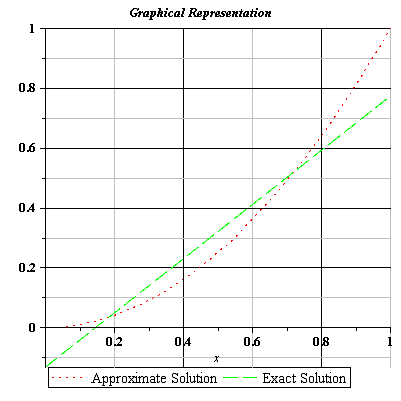
Fig 3.40 Comparison of Exact and Approximate Solutions of Eq. (3.279) for n=1.
References
[1]. Zhu, S, The generalized Riccati equation mapping method in non-linear evolution equation: Application to (2+1)-dimensional Boiti-Leon- Pempinelle equation.
[2]. A.M. Wazwaz, Linear and Nonlinear Integral Equations Method and Applications, Springer Heidelberg Dordrecht London, New York, 2011.
